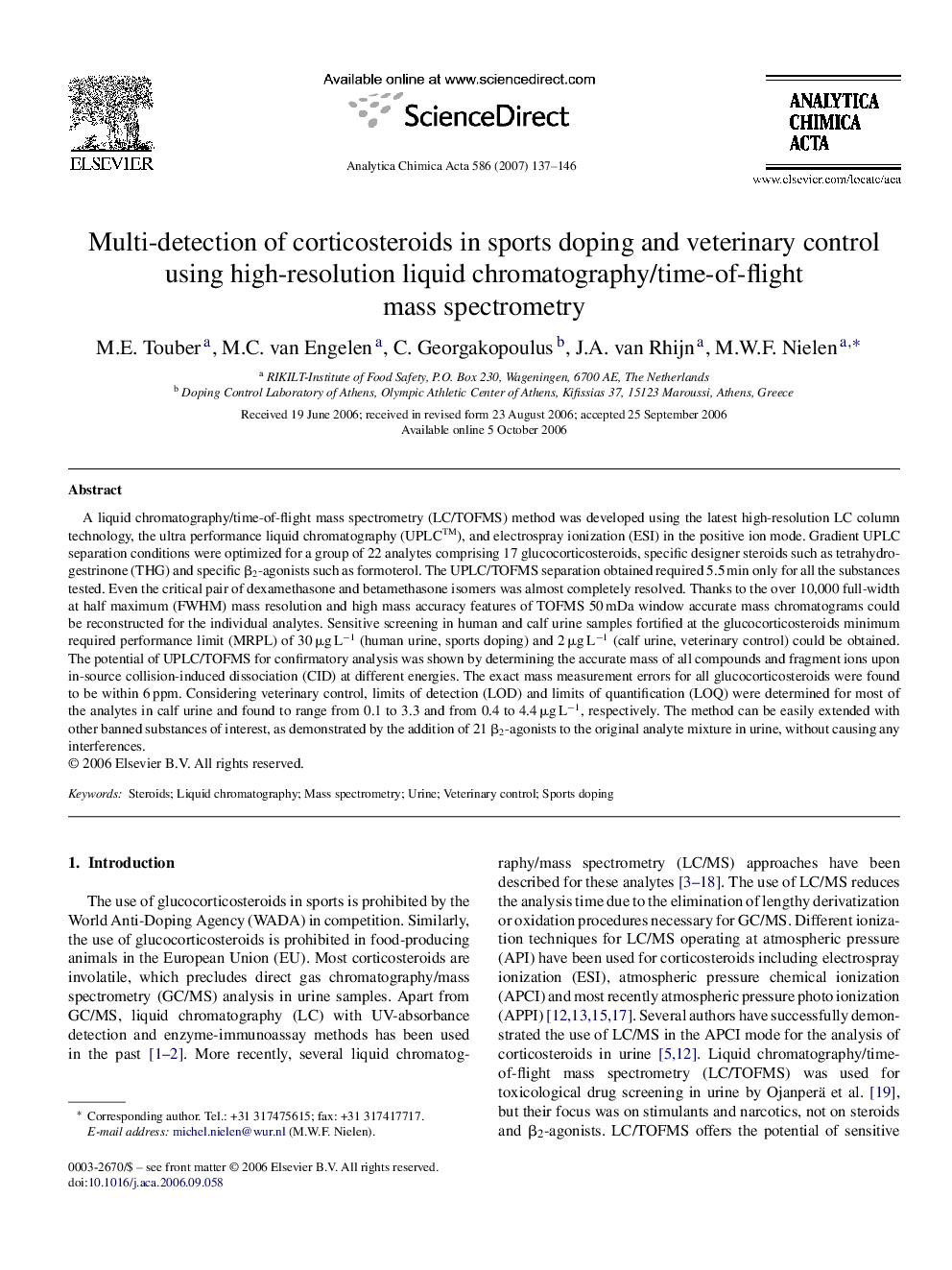| کد مقاله | کد نشریه | سال انتشار | مقاله انگلیسی | نسخه تمام متن |
|---|---|---|---|---|
| 1170686 | 1491175 | 2007 | 10 صفحه PDF | دانلود رایگان |

A liquid chromatography/time-of-flight mass spectrometry (LC/TOFMS) method was developed using the latest high-resolution LC column technology, the ultra performance liquid chromatography (UPLCTM), and electrospray ionization (ESI) in the positive ion mode. Gradient UPLC separation conditions were optimized for a group of 22 analytes comprising 17 glucocorticosteroids, specific designer steroids such as tetrahydrogestrinone (THG) and specific β2-agonists such as formoterol. The UPLC/TOFMS separation obtained required 5.5 min only for all the substances tested. Even the critical pair of dexamethasone and betamethasone isomers was almost completely resolved. Thanks to the over 10,000 full-width at half maximum (FWHM) mass resolution and high mass accuracy features of TOFMS 50 mDa window accurate mass chromatograms could be reconstructed for the individual analytes. Sensitive screening in human and calf urine samples fortified at the glucocorticosteroids minimum required performance limit (MRPL) of 30 μg L−1 (human urine, sports doping) and 2 μg L−1 (calf urine, veterinary control) could be obtained. The potential of UPLC/TOFMS for confirmatory analysis was shown by determining the accurate mass of all compounds and fragment ions upon in-source collision-induced dissociation (CID) at different energies. The exact mass measurement errors for all glucocorticosteroids were found to be within 6 ppm. Considering veterinary control, limits of detection (LOD) and limits of quantification (LOQ) were determined for most of the analytes in calf urine and found to range from 0.1 to 3.3 and from 0.4 to 4.4 μg L−1, respectively. The method can be easily extended with other banned substances of interest, as demonstrated by the addition of 21 β2-agonists to the original analyte mixture in urine, without causing any interferences.
Journal: Analytica Chimica Acta - Volume 586, Issues 1–2, 14 March 2007, Pages 137–146